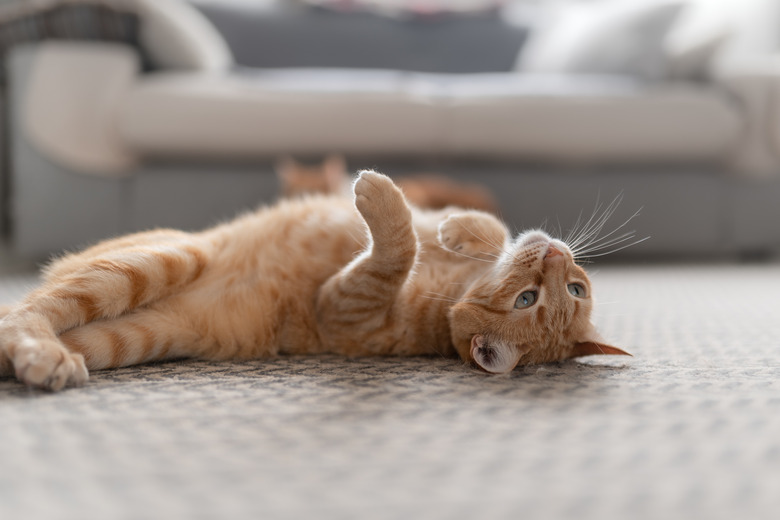How To Seal Pet Stains On Subflooring
We may receive a commission on purchases made from links.
Urine can penetrate carpet, padding, laminate, and other flooring, penetrating down to the subfloor below. Once this happens, you could be stuck with pet urine odor even if you clean or replace the flooring. Cleaning subfloor pet stains and sealing them will ensure those bad smells don't come back.
Uncover the source
Uncover the source
You might only suspect that your pet is pottying in the house, but it's easy to find out for sure. Thankfully, you won't have to crawl around on your hands and knees sniffing the carpet, either. A simple blacklight will cause the phosphorus and proteins in the animal urine to glow under its light.
Blacklight — also known as the UV-A wavelength — runs from 320 and 400 nanometers (nm) per the University Corporation for Atmospheric Research. The higher the number, the better you'll be able to spot the old pet stains on your flooring. Inexpensive dollar store models will do the trick if you can get the room completely dark and get the light fairly close.
However, the stronger the light, the more noticeable the stains will appear, according to Preventive Vet. This will help find old stains that might have been left from long ago that have penetrated down to the subfloor. It doesn't matter if the stains are from urine or if they are fecal stains; both smell and both can "stick" to the carpet or concrete in an unpleasant manner.
Cleaning subfloor pet stains
Cleaning subfloor pet stains
Once you've located the areas where pets have relieved themselves, you're ready to tackle what lies beneath. Peel back carpeting or lift other flooring back from the areas you'll need to clean. Vacuum or sweep away any crystalized urine or dust at the spot. This prevents any dried urine crystals from penetrating into your subfloor.
For concrete subfloor, treat with 1/2 cup TSP (Trisodium Phosphate) to 1 gallon of hot water, advises All Garage Floors. Wear latex gloves and eye protection and scrub well to remove urine that's penetrated into the concrete. Then drench the concrete stains with enzymatic cleaner and allow it to penetrate for at least 10 minutes before mopping it away.
Plywood subflooring needs to be cleaned with as little moisture as possible to prevent swelling or peeling. Spritz with an enzymatic cleaner designed for pet stains. The enzymes will help neutralize the smell to prevent your pet from returning to refresh its urine scent. You might have to replace some areas of the subfloor if the urine penetrated too deeply. Lay a towel or blanket over the spot for a few days once the floor is completely dry to tell if the stain and odor remain.
Apply subfloor sealer
Apply subfloor sealer
Once your subfloor is free from odors and stains, using the enzymatic cleaner, make sure it is completely dry. Then you can apply a sealer such as Kilz Original Primer which will block moisture from penetrating into the subfloor and seal pet odors in the subfloor and cover up any remaining pet stains. Use a paint roller on a long handle such as a broomstick, suggests Home Depot.
Start at the back corner of the room and apply a light coat to the subfloor, working your way towards the door. Let the sealer dry thoroughly — about 24 hours — before proceeding. Using a waterproof membrane or roll-out underlayment will further protect your subfloor. Make sure the membrane covers any gaps between the floor and wall to prevent any future urine from pooling and being absorbed by the wallboard or baseboard.
Once the membrane is in place, apply a second layer of the sealer to the top of it. Let it dry for at least 24 hours to make sure no moisture remains before replacing or installing flooring. Consider installing waterproof flooring in your rental homes or if pet urine is something you have to deal with frequently in your own home. Good options include water-resistant tile, laminate, hardwood, or vinyl.
